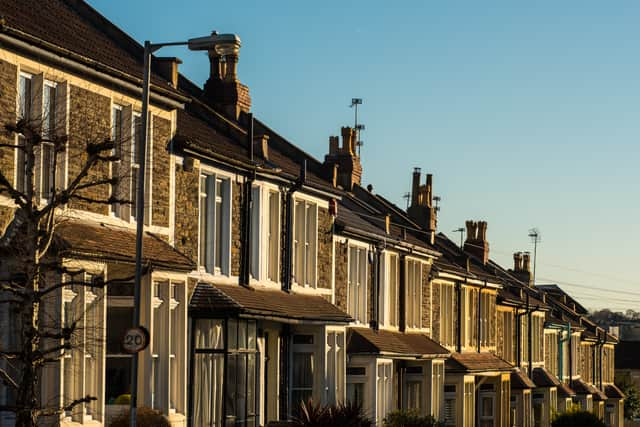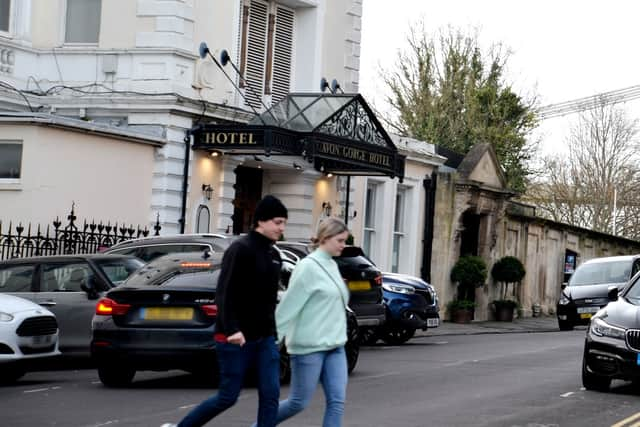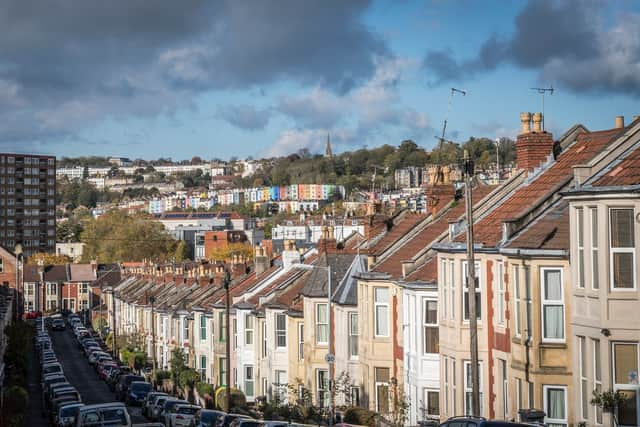The 8 Bristol areas with the highest Covid rates as city gears up for New Year’s Eve
and live on Freeview channel 276
The eight Bristol areas with the highest Covid infection rates have been revealed as the city gears up for big events that have been given the go ahead for New Year’s Eve.
Many areas of the city are showing rates much higher than the national average, which currently stands at 1,245 per 100,000 of the population, according to NHS England.
Advertisement
Hide AdAdvertisement
Hide AdOn Monday (December 27), Boris Johnson announced there would be no further coronavirus restrictions in England before NYE, despite soaring cases of the Omicron variant.
It means Bristol could see an influx of revellers making their way over for New Year’s celebrations from Wales, which along with Scotland and Northern Ireland has seen nightclub closures and other rules imposed in a bid to stem the Omicron surge.
Cases have jumped in all but two areas of Bristol, these being Bishopsworth (where cases remained static) and Brislington (where cases fell by 35.8%).
Here are the eight areas of Bristol currently showing the highest Covid rates during the latest data period available (the week leading up to December 23).
Horfield
Advertisement
Hide AdAdvertisement
Hide AdHorfield currently holds the highest infection rate in Bristol, which stood at 2,196.0 per 100,000 of the population in the week leading up to December 23. The area recorded an infection rate of 1,205.1 per 100,000 of the population the week before (leading up to December 16), showing a 82.2% increase.
Bishopston
Bishopston has the second highest infection rate in Bristol. In the week leading up to December 23, this stood at 2,134.7 per 100,000 of the population. The area recorded an infection rate of 1,000.4 per 100,000 of the population the week before (leading up to December 16). This was an increase of 113.4%.


Redland and St Andrew’s
Redland and St Andrew’s currently holds the third highest infection rate in Bristol, which stood at 2,116.2 per 100,000 of the population in the week leading up to December 23. The area recorded an infection rate of 1195.7 per 100,000 of the population the week before (leading up to December 16), showing a 77.0% increase.
Clifton Village
Clifton Village has the fourth highest infection rate in Bristol. In the week leading up to December 23, this stood at 1997.8 per 100,000 of the population. The area recorded an infection rate of 1198.7 per 100,000 of the population the week before (leading up to December 16). This was an increase of 66.7%.


Southville
Advertisement
Hide AdAdvertisement
Hide AdThe infection rate in Southville stood at 1,964.3 per 100,000 of the population in the week leading up to December 23. The area recorded an infection rate of 950.8 per 100,000 of the population the week before (leading up to December 16), meaning the infection rate jumped by 106.6% in seven days.


Temple Meads
The infection rate in the Temple Meads area stood at 1,940.4 per 100,000 of the population in the week leading up to December 23. The area recorded an infection rate of 1,078 per 100,000 of the population the week before (leading up to December 16), meaning the infection rate jumped by 80.0% in a week.
St Paul’s
In the week leading up to December 23, St Paul’s recorded an infection rate of 1,869.2 per 100,000 of the population. It meant that the infection rate had increased by 75.0% after the area recorded an infection rate of 1,068.1 per 100,000 of the population the week prior.
Clifton East
The infection rate in the Clifton East area stood at 1,818.8 per 100,000 of the population in the week leading up to December 23. The area recorded an infection rate of 1,380.9 per 100,000 of the population the week before (leading up to December 16), meaning the infection rate jumped by 31.7% in a week.
Comment Guidelines
National World encourages reader discussion on our stories. User feedback, insights and back-and-forth exchanges add a rich layer of context to reporting. Please review our Community Guidelines before commenting.
